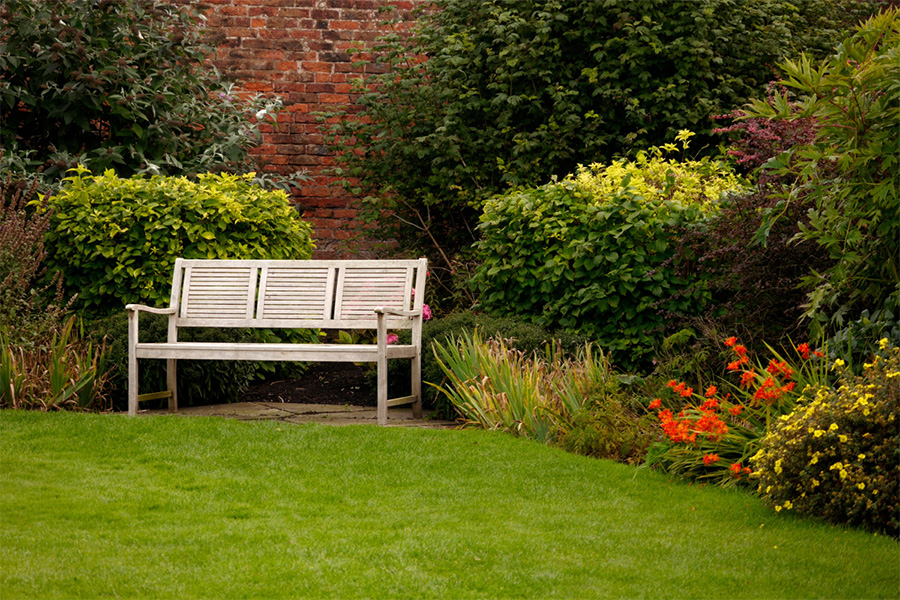How to Improve Your UK Garden in Winter

Winter in the UK can be a challenging time for gardeners, with short days, cold temperatures, and frequent rain transforming outdoor spaces into muddy, uninviting areas. However, with a few thoughtful improvements, you can keep your garden functional, attractive, and ready for spring. From protecting plants to enhancing usability, here are practical ways to improve your UK garden during winter.
Protect Your Plants
Winter’s frost and wind can damage vulnerable plants, so protection is key. Start by mulching around the base of shrubs, roses, and perennials with a thick layer of organic material like bark or compost. This insulates roots against freezing temperatures, common in UK winters. For delicate plants, use horticultural fleece or cloches to shield them from frost and wind. If you have potted plants, move them to a sheltered spot, such as against a house wall, or wrap pots in bubble wrap to prevent root damage.
Evergreens and hardy plants, like holly or winter heather, can add colour and structure to your garden. Plant these in autumn or early winter to establish roots before the coldest months. Regularly check for waterlogging, as heavy UK rainfall can drown plants—ensure good drainage by raising beds or adding grit to soil.
Maintain Your Lawn
UK winters often leave lawns soggy and patchy, but a little care can keep them in good shape. Avoid walking on grass during frosty or wet conditions to prevent compaction, which damages soil structure. If your lawn is prone to waterlogging, aerate it with a garden fork to improve drainage. Mow sparingly, only on dry days, and set the mower blades high to avoid stressing the grass. For bare patches, consider overseeding in early spring, but in winter, cover them with a light layer of compost to protect the soil.
Clear fallen leaves regularly to prevent mould and pests. A leaf blower or rake works well, and you can compost the leaves for future use. If your lawn struggles in winter, consider reducing its size and replacing parts with hardier surfaces, like gravel or the aluminium decking discussed below.
Switch to Aluminium Decking
One transformative way to improve your garden’s usability in winter is by switching to aluminium decking. Traditional wooden decking often becomes slippery and prone to rot in the UK’s wet, cold climate, requiring frequent maintenance. Aluminium decking, however, is durable, low-maintenance, and weather-resistant, making it ideal for winter conditions. Its non-slip surface ensures safety during rain or frost, and it won’t warp or fade under prolonged exposure to moisture or UV rays.
Aluminium decking is also eco-friendly, often made from recycled materials, and its sleek, modern look can elevate your garden’s aesthetic. Available in various colours and textures, it blends seamlessly with any style, from urban patios to rural gardens. Installation is straightforward, and many systems are designed for easy fitting, potentially saving on labour costs. By replacing or adding aluminium decking, you create a usable outdoor space year-round, perfect for winter barbecues or a morning coffee, adding both functionality and value to your home.
Add Winter Lighting
With daylight hours limited in winter, outdoor lighting can transform your garden’s ambiance and usability. Solar-powered or low-voltage LED lights are energy-efficient and easy to install along pathways, around patios, or in trees. String lights or lanterns can create a cosy atmosphere, making your garden inviting even on dark evenings. Position lights to highlight key features, like a favourite tree or water feature, to maintain visual interest.
Ensure lights are weatherproof (IP65 rating or higher) to withstand rain and frost. Motion-sensor lights add security, deterring intruders while illuminating paths for safe navigation. Good lighting can make your garden feel like an extension of your home, encouraging use even in winter.
Create a Wildlife Haven
Winter is a tough time for UK wildlife, so make your garden a haven for birds and small creatures. Install bird feeders with high-energy foods like suet balls or sunflower seeds, and place them away from predator-prone areas. A birdbath with fresh water (kept ice-free with a floating heater) attracts birds and adds charm. Hedgehog houses or log piles provide shelter for hibernating animals, supporting local biodiversity.
Planting berry-producing shrubs, like cotoneaster or pyracantha, offers natural food sources for birds. These small additions not only help wildlife but also make your garden feel alive and vibrant, boosting its appeal.
Tidy and Plan Ahead
Winter is the perfect time to tidy your garden and plan for spring. Prune dormant trees and shrubs, like roses or fruit trees, to encourage healthy growth. Clean and store tools to prevent rust, and repair fences or trellises damaged by wind. Use this quieter season to plan new features, such as raised beds or a compost system, to streamline spring planting.
By protecting plants, maintaining your lawn, switching to aluminium decking, adding lighting, supporting wildlife, and planning ahead, you can keep your UK garden thriving through winter. These improvements ensure your outdoor space remains functional, beautiful, and ready for the warmer months ahead.




